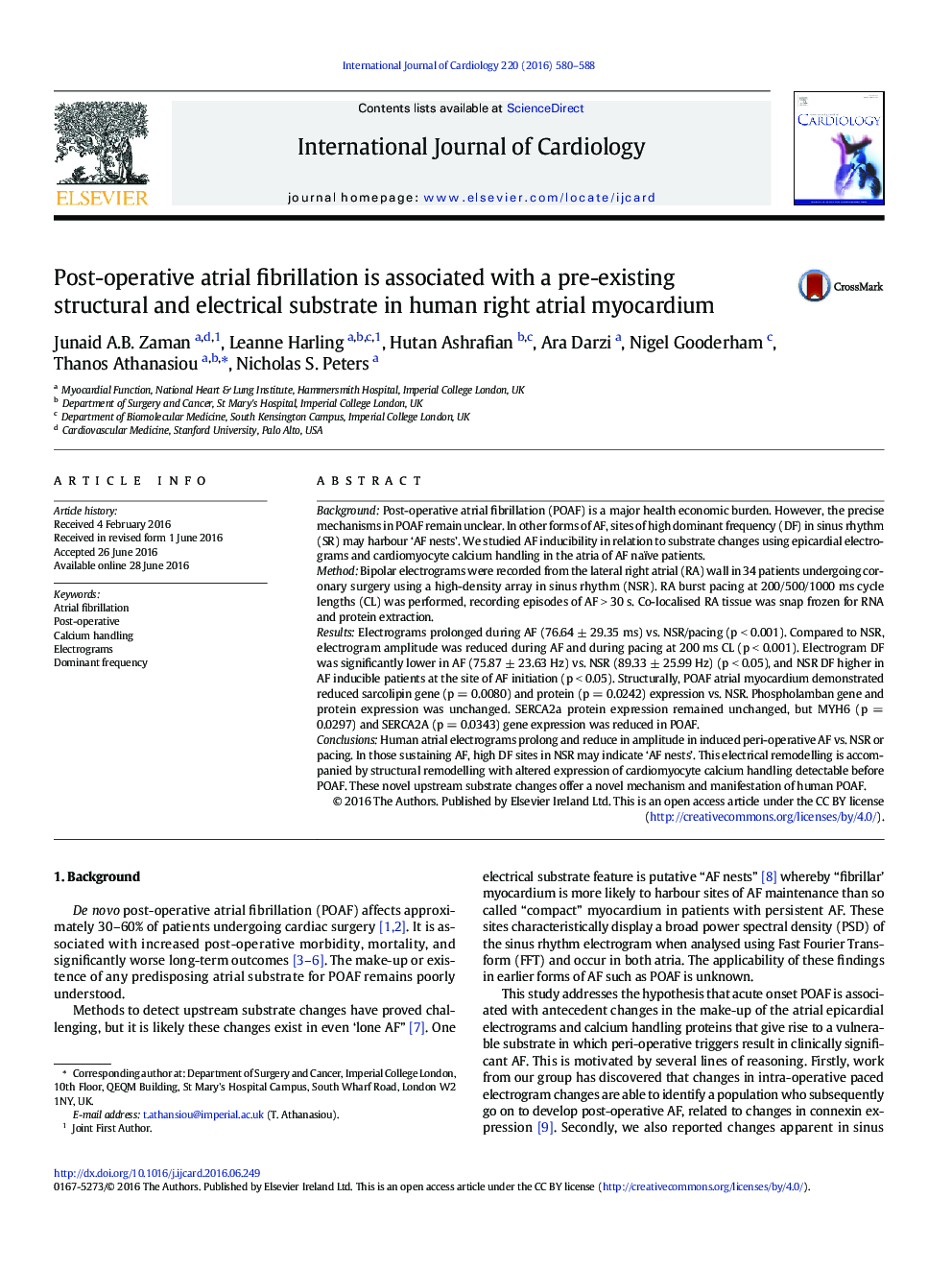| Article ID | Journal | Published Year | Pages | File Type |
|---|---|---|---|---|
| 5963589 | International Journal of Cardiology | 2016 | 9 Pages |
BackgroundPost-operative atrial fibrillation (POAF) is a major health economic burden. However, the precise mechanisms in POAF remain unclear. In other forms of AF, sites of high dominant frequency (DF) in sinus rhythm (SR) may harbour 'AF nests'. We studied AF inducibility in relation to substrate changes using epicardial electrograms and cardiomyocyte calcium handling in the atria of AF naïve patients.MethodBipolar electrograms were recorded from the lateral right atrial (RA) wall in 34 patients undergoing coronary surgery using a high-density array in sinus rhythm (NSR). RA burst pacing at 200/500/1000 ms cycle lengths (CL) was performed, recording episodes of AF > 30 s. Co-localised RA tissue was snap frozen for RNA and protein extraction.ResultsElectrograms prolonged during AF (76.64 ± 29.35 ms) vs. NSR/pacing (p < 0.001). Compared to NSR, electrogram amplitude was reduced during AF and during pacing at 200 ms CL (p < 0.001). Electrogram DF was significantly lower in AF (75.87 ± 23.63 Hz) vs. NSR (89.33 ± 25.99 Hz) (p < 0.05), and NSR DF higher in AF inducible patients at the site of AF initiation (p < 0.05). Structurally, POAF atrial myocardium demonstrated reduced sarcolipin gene (p = 0.0080) and protein (p = 0.0242) expression vs. NSR. Phospholamban gene and protein expression was unchanged. SERCA2a protein expression remained unchanged, but MYH6 (p = 0.0297) and SERCA2A (p = 0.0343) gene expression was reduced in POAF.ConclusionsHuman atrial electrograms prolong and reduce in amplitude in induced peri-operative AF vs. NSR or pacing. In those sustaining AF, high DF sites in NSR may indicate 'AF nests'. This electrical remodelling is accompanied by structural remodelling with altered expression of cardiomyocyte calcium handling detectable before POAF. These novel upstream substrate changes offer a novel mechanism and manifestation of human POAF.
